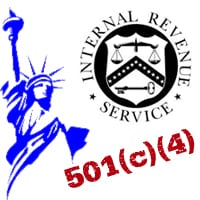An increasing number of private foundations and charitable organizations are seeking to achieve greater social impact by including Mission Related Investments in their investment strategy. Before your organization embarks on establishing one, it’s advisable to understand what a Mission Related Investment (MRI) is, how it differs from a Program Related Investment, what to consider when adding MRIs to the organization’s portfolio, and how to protect the organization from the risks associated with them.
While there is no actual codified definition, MRIs are generally understood to be risk-adjusted or “prudent” market-rate investments. It is a financial vehicle made out of the organization’s investment assets (e.g., its endowment) rather than its program assets. Unlike its counterpart, the Program Related Investment (PRI), which has the primary goal of accomplishing a charitable purpose, an MRI seeks to generate a market rate of return on capital while also furthering a social purpose. Put another way, PRIs offer solutions where the markets do not have a solution, while MRIs use the power of the market to create impact.
It’s important for foundations seeking to establish their investment strategy to understand the key legal and structural differences between PRIs and MRIs. Since the requirements to qualify as a PRI are more stringent than an MRI, a PRI avoids being classified as a jeopardizing investment, and can be counted towards a foundation’s annual distribution requirement.
An MRI, on the other hand, is a commercial investment that also has a goal to create social impact but is not subject to the stringent standards of the PRI. Consequently, an MRI does not count towards a foundation’s annual requirement and is not excluded from the rules governing jeopardizing investments. In addition, in calculating the amount of a foundation’s five percent annual distribution requirement, MRIs are not excluded from the foundation’s assets, as is the case with PRIs. (For an in-depth discussion of PRIs, please read Are You Looking to Make an Impact? Consider a Program Related Investment).
While the rules governing the MRI are not as rigid as those governing PRIs, there are a few key ones that MRIs must comply with. The “Jeopardizing Investments” rule, found in Section 4944 of the Internal Revenue Code (“Code”), imposes an excise tax on private foundations that invest “any amount in such a manner as to jeopardize the carrying out of its exempt purposes.” A private foundation and its management may be subject to excise taxes for making a jeopardizing or imprudent investment. Because the Jeopardizing Investments rule applies to MRIs, MRIs must be comprised of prudent investments.
MRIs must also comply with the “Excess Business Holdings Rule.” Section 4943 of the Code states that a foundation, together with its disqualified persons, may own no more than twenty percent of the voting stock of a business enterprise (some exceptions may apply).
Since MRIs are not treated as a charitable activity but rather as commercial investments, they must meet the prudent investor standards under state and federal law. The applicable State-enacted version of The Uniform Prudent Management of Institutional Funds Act (UPMIFA) applies a standard for prudent investments whereby “each person responsible for managing and investing an institutional fund shall manage and invest the fund in good faith and with the care an ordinarily prudent person in a like position would exercise under similar circumstances.” In addition, UPMIFA lists a number of factors that must be considered, if relevant, when making an investment. Most states have adopted a form of UPMIFA.
Developing an MRI Strategy
The board of an organization that is considering embarking on an MRI strategy should, as a matter of good governance, consider its rationale. Whether as a stand-alone policy or a policy that is incorporated into the organization’s investment policy, drafting a written MRI Policy should be the board’s first step. The discipline of drafting an MRI policy will ensure that everyone is in agreement when it comes to incorporating MRIs into the overall investment strategy.
The substance of the MRI Policy will depend in part on the organizational view of MRIs and their purpose. Some may view MRIs from a programmatic standpoint, wherein the MRI serves as a tool available to the organization in implementing its philanthropic strategy. Other organizations may view MRIs from an investment perspective and consider it as an opportunity to make a market rate investment that also happens to foster social impact.
The following is a list of important questions that should be asked when drafting an MRI Policy.
- Why Does the Organization Want to Make an MRI?
It’s helpful for an organization to consider what it believes is the key objective for entering into an MRI strategy. The organization should consider what it hopes to accomplish by making an MRI. If the full board is in agreement regarding the rationale or objectives for entering into MRIs, it will help support the development of a uniform set of metrics used by the organization when assessing the success of MRIs in achieving those goals.
- Does the organization have the skills and staffing within the organization to carry out an MRI Strategy?
In order to implement an MRI, organizations will need to rely on individuals with various expertise including investment, programmatic and legal experience. Executives and the board should determine whether they can utilize in-house staff or board members, or whether they should consider engaging consultants.
The board should take into consideration if it will require a legal opinion that the potential MRI does not qualify as a jeopardizing investment. The size of the MRI relative to the organization’s investment portfolio may be a factor for consideration when determining whether a legal opinion is warranted.
- Who will be responsible for oversight?
Prior to entering into an MRI strategy, the board should consider who will be responsible for oversight of the strategy. If the organization is considering the MRI as a key tool in accomplishing its philanthropic objectives, it may make sense to have both an advisor with programmatic experience as well as one with investment experience onboard.
On the other hand, if the foundation views the MRI primarily as a market rate investment that also has social impact, a person or committee with investment experience, guided by a board-approved statement of social impact objectives, may suffice. The investment committee of the board may be an appropriate oversight body for this responsibility when aligned with the foundation’s MRI objectives.
- What will the balance be between investment risk and social return?
In advance of embarking on an MRI strategy, the board should determine whether it is willing to take a greater financial risk (while still complying with UPMIFA) to the extent the social returns of the investment have the potential to be great. It may be that, regardless of the potential for social impact results, the board’s appetite for investment risk will remain the same. Making a riskier investment may require altering existing investments within the organization’s portfolio in order to comply with UPMIFA’s requirement that each individual investment be reviewed in the context of the entire portfolio, in accordance with prudent investor standards.
Consider the scenario in which the financial rewards are substantial, but the social impact is not as significant. The answer to these questions will largely depend on how the Board views mission-related investing and why it has decided to enter this arena. A board would be well-advised to determine in advance of entering into an MRI how it feels about risk and what the appropriate balance is in guiding its MRI strategy.
- How will the organization measure the success of a Mission Related Investment?
In reviewing the performance of an MRI, members of the board and management of the foundation should discuss how they intend to measure success. The foundation could establish that success is based on the investment generating a minimum level of return, while achieving a loosely defined social impact. For example, investing in a clothing manufacturer that uses environmentally friendly dyes for its fabrics could result in generous returns to its investors but only modest results in terms of reducing harmful environmental impact.
With a benchmark focusing significantly on market rate returns, an investment that generates modest financial returns but generates substantial social impact may be considered unsuccessful because the return on investment was too low. The members of the board should consider how much of a social impact they are looking to make through any MRI.
In Conclusion
The philanthropic sector has come to understand that aligning investments with mission and values can be financially rewarding. A greater number of foundations have decided to take a portion of their endowment and invest it in ways that align with their mission. Some have decided to invest their entire investment portfolio or endowment in line with their mission.
I predict that in the next few years we are going to see a dynamic shift in the way funders and their boards view their fiduciary obligations. Foundations contemplating entering into MRIs would be well advised to create a policy that articulates how MRIs can be thoughtfully carried out to achieve the desired investment and social objectives.
- Kavita Dolanhttps://perlmanandperlman.com/author/kavitad/
- Kavita Dolanhttps://perlmanandperlman.com/author/kavitad/
- Kavita Dolanhttps://perlmanandperlman.com/author/kavitad/















